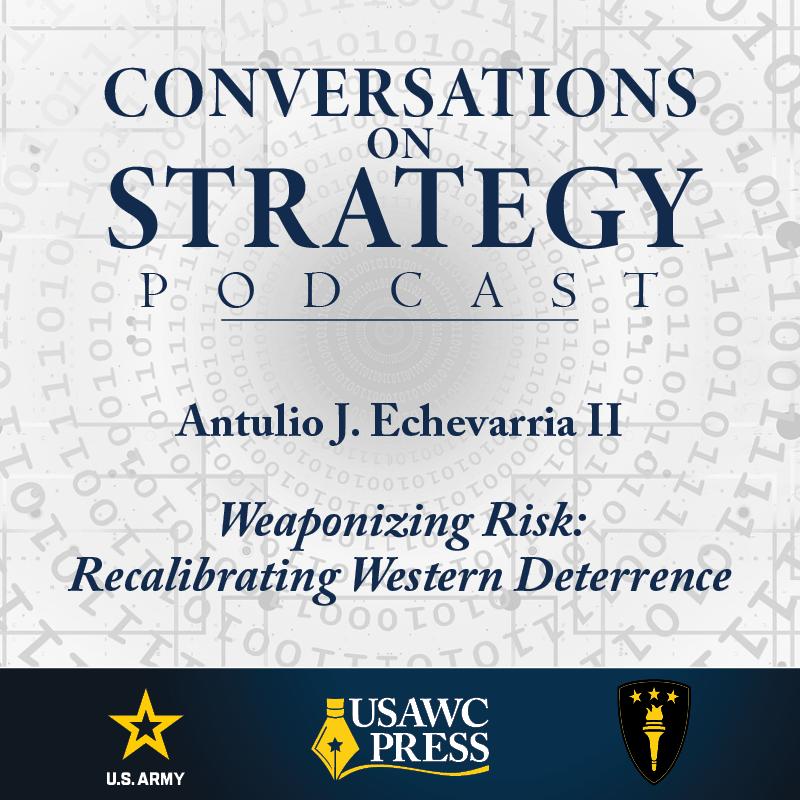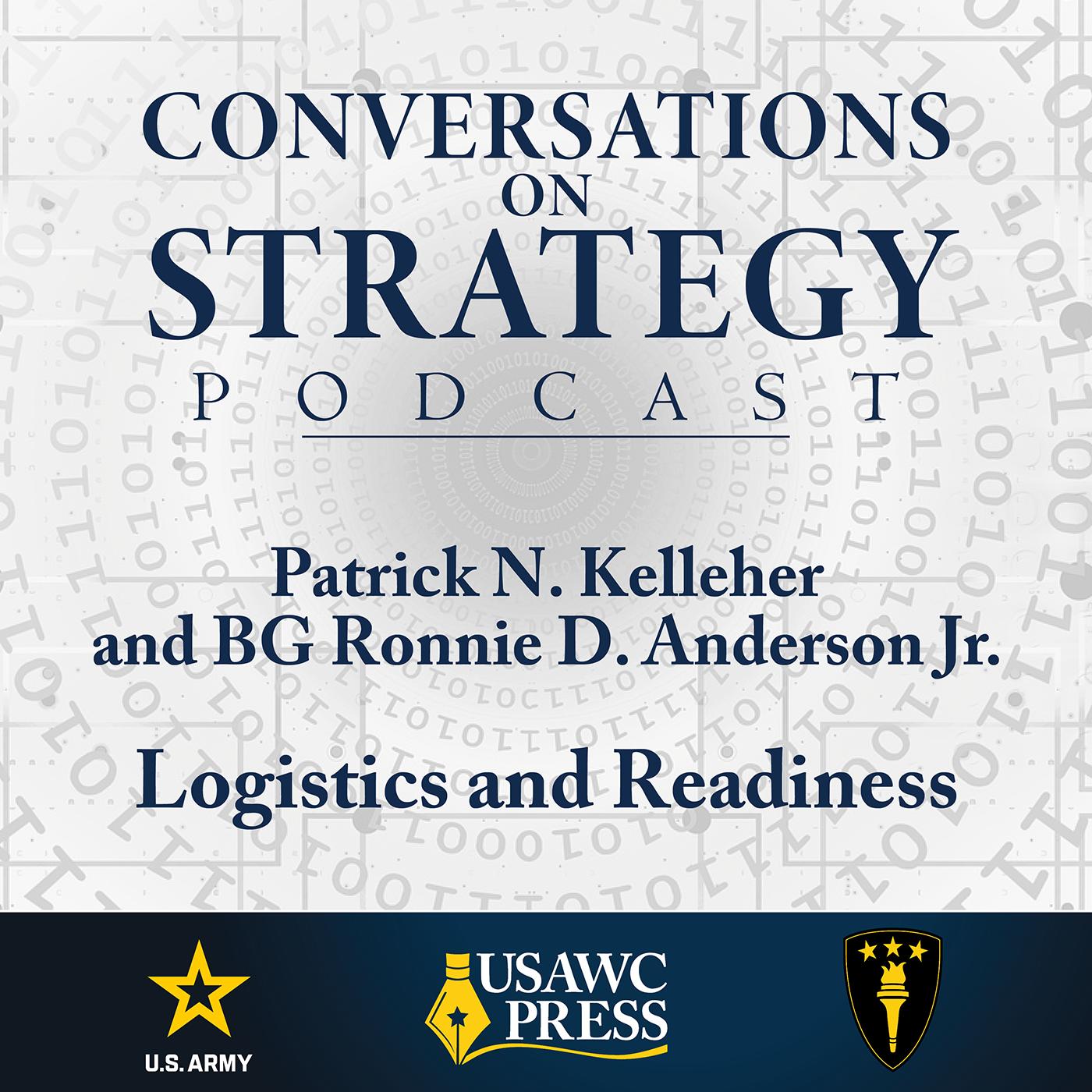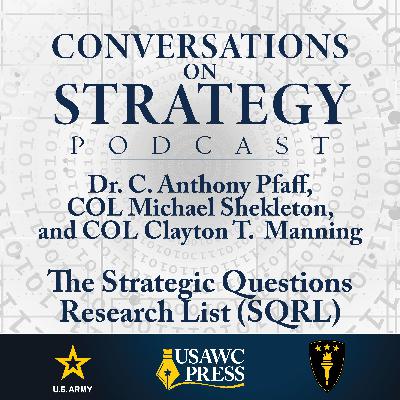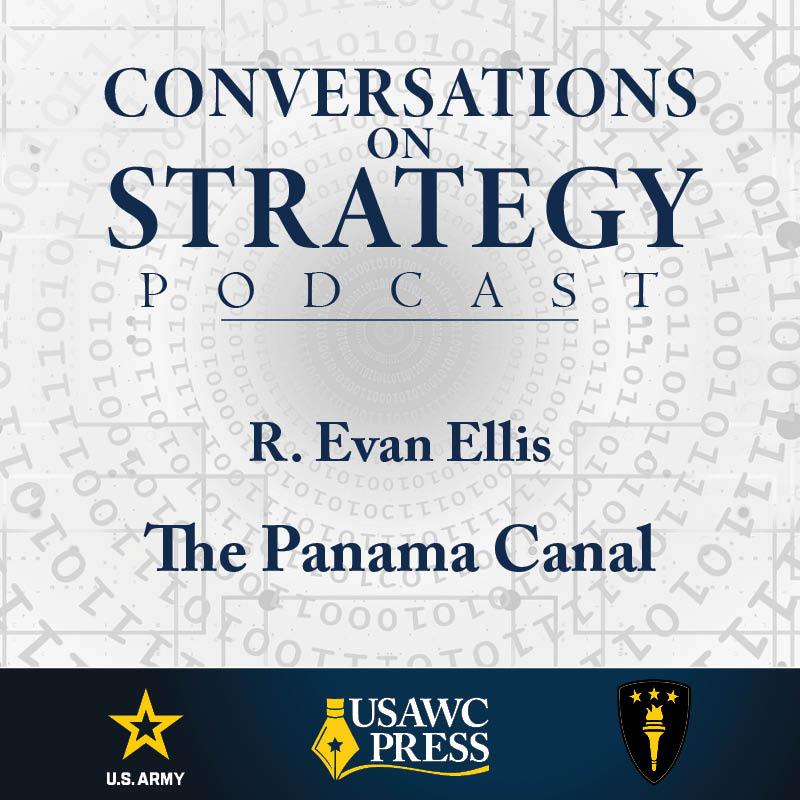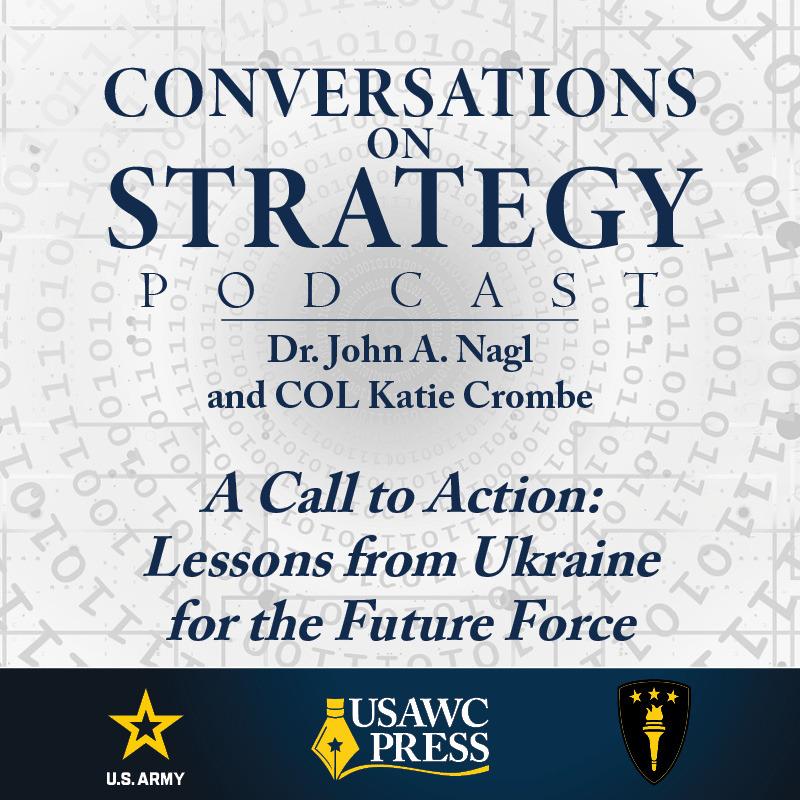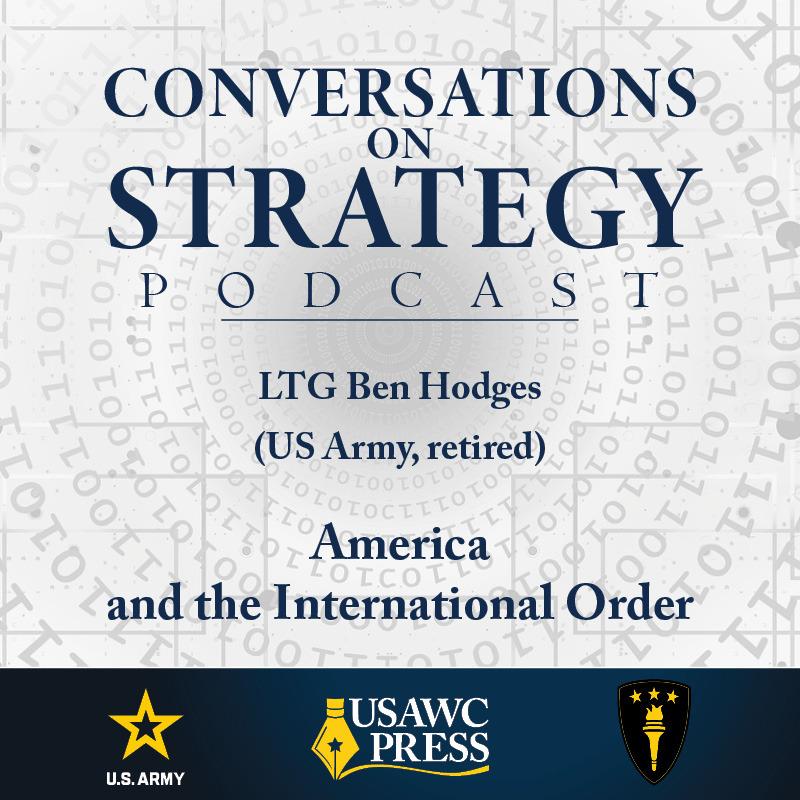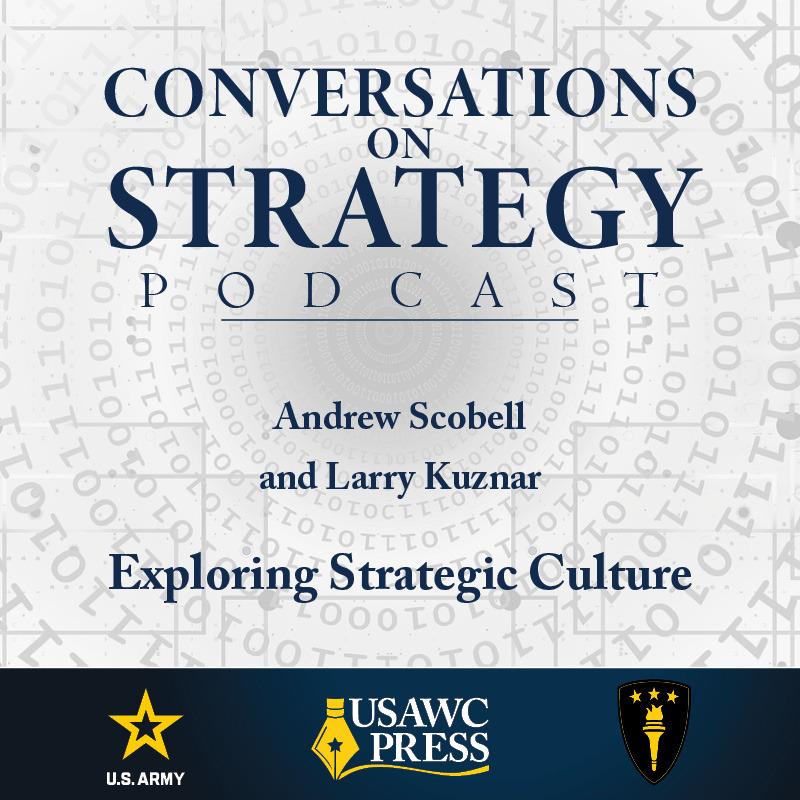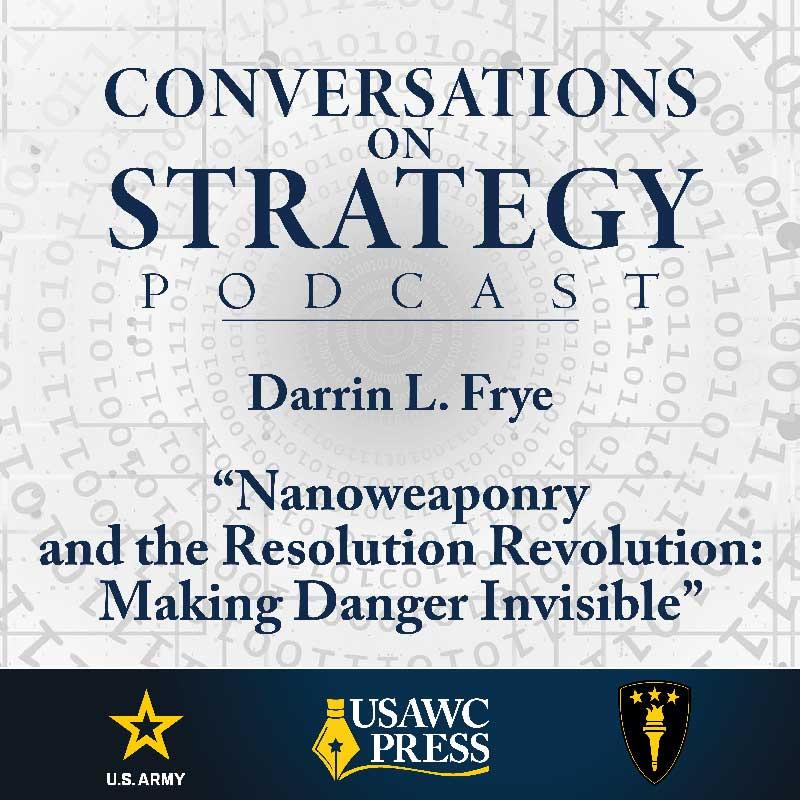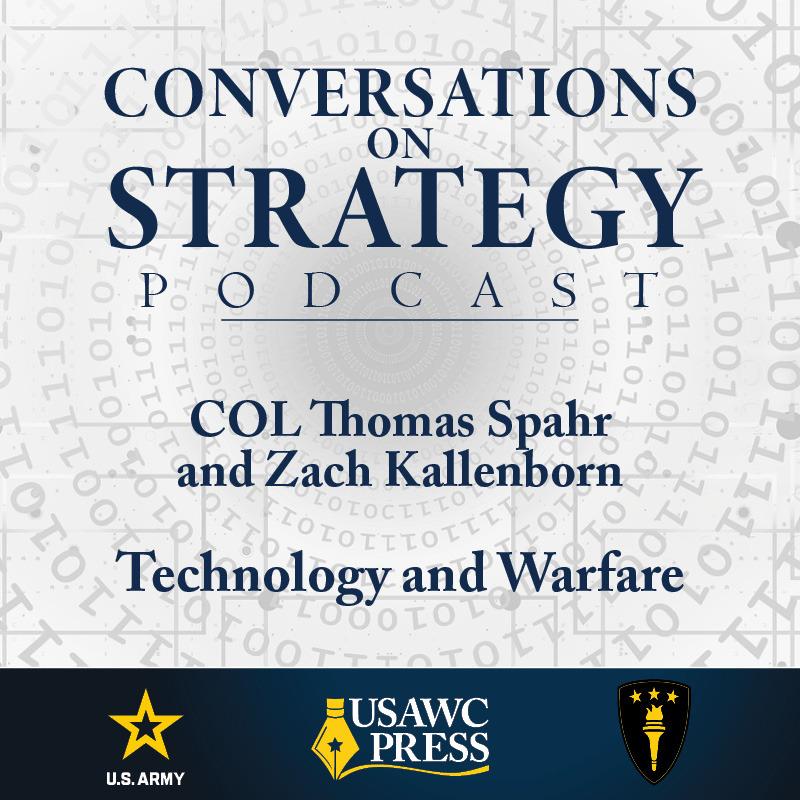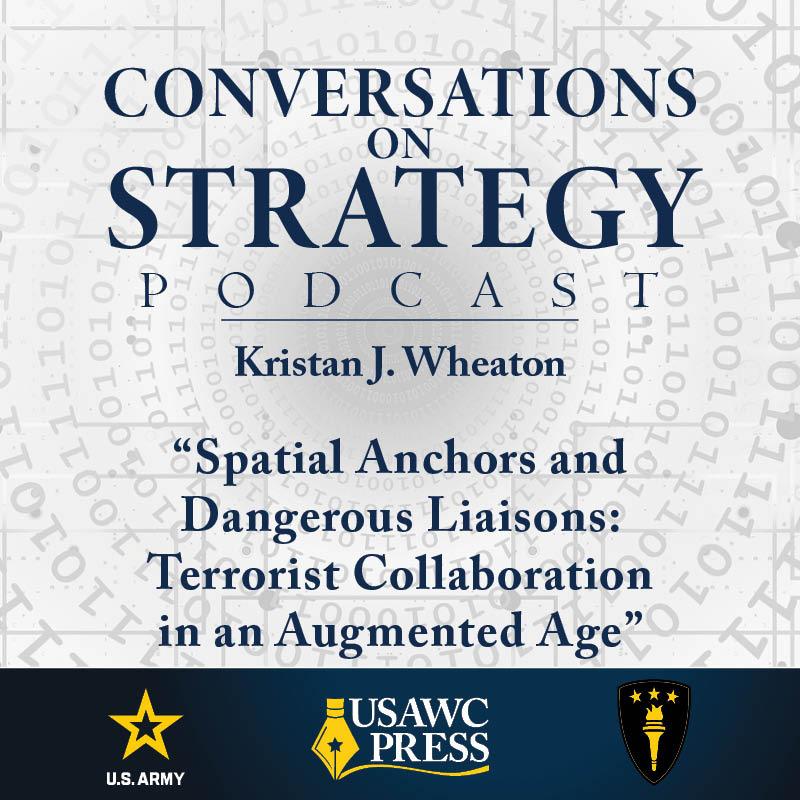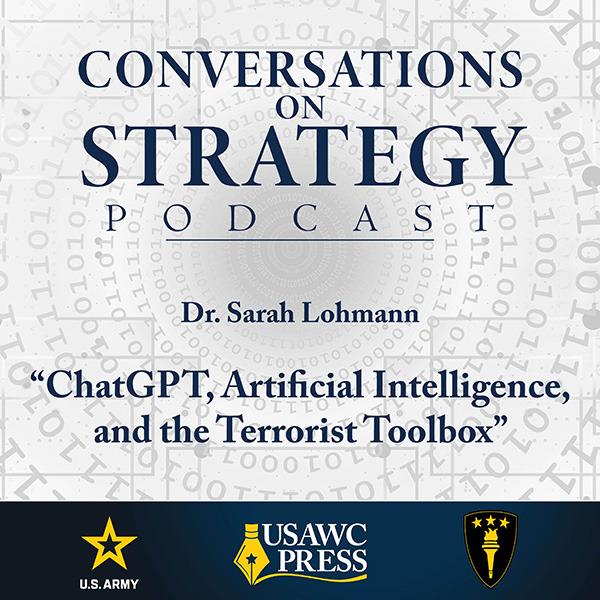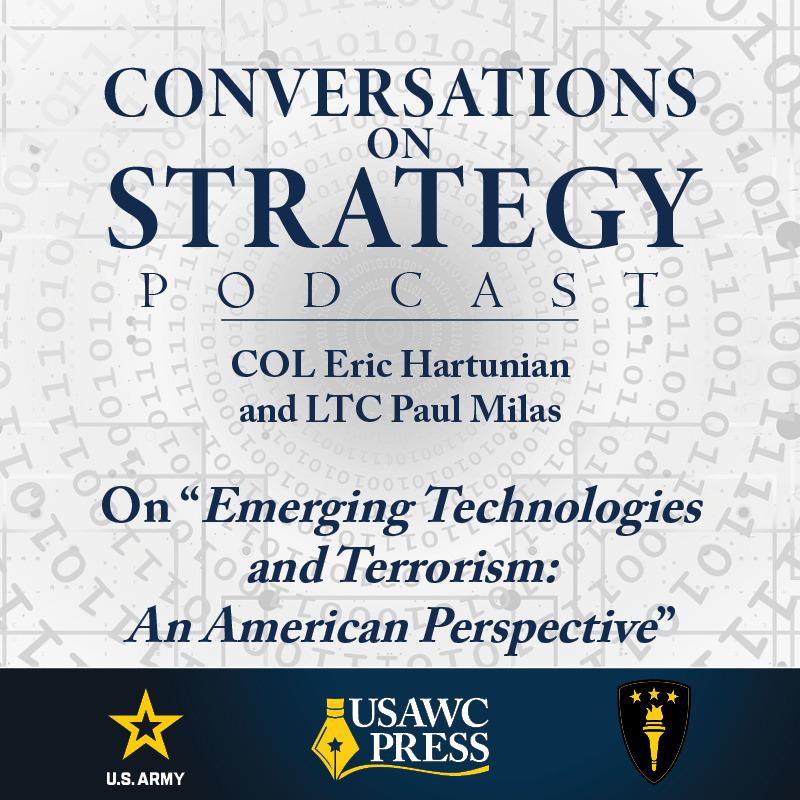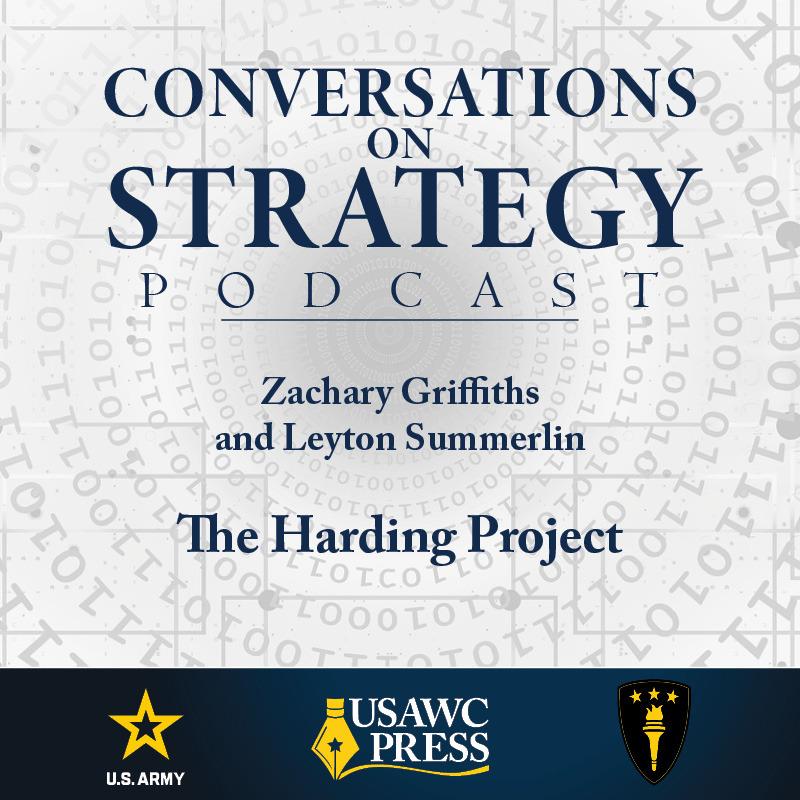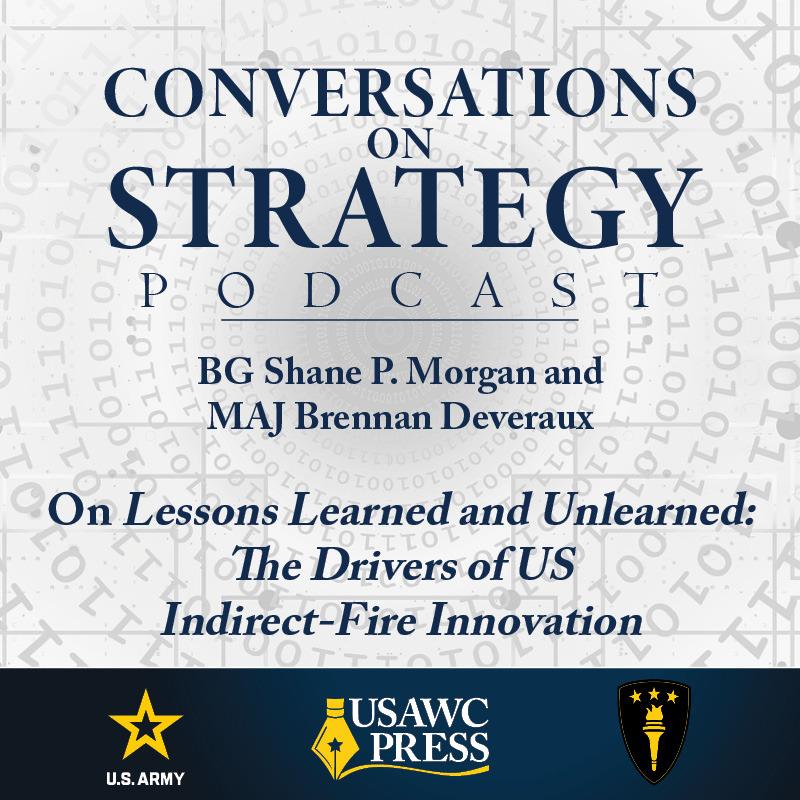Conversations on Strategy Podcast – Ep 55 – Dr. James D. Scudieri, Colonel Jon Klug – Lieutenant General Robert C. Richardson, Jr. Central Pacific Theater Army Commander for Admiral Chester W. Nimitz, 1943–1945
Description
Dr. James D. Scudieri and Colonel Jon Klug analyze Lieutenant General Robert C. Richardson Jr.’s extensive operational reports and his role as Theater Army commander under Admiral Nimitz. The discussion highlights Richardson’s advocacy for Joint operational planning and the importance of interservice cooperation. They explore his unique command challenges, including a notable civil-military incident, and reflect on how his strategic insights offer valuable lessons for today’s military leaders. This exploration underlines the significance of integrating historical perspectives into contemporary military education.
E-mail usarmy.carlisle.awc.mbx.parameters@army.mil to give feedback on this podcast
Podcast record date: August 14, 2024
Keywords: US Army in Pacific War, World War II Central Pacific, Lieutenant General Robert C. Richardson Jr., Army war-fighting functions case study, Joint functions case study
Episode Transcript
Stephanie Crider (Host)
You’re listening to Conversations on Strategy. The views and opinions expressed in this podcast are those of the guests and are not necessarily those of the Department of the Army, the US Army War College, or any other agency of the US government.
I’m in the studio with Dr. James D. Scudieri and Colonel Jon Klug, PhD. Scudieri is the author of Lieutenant General Robert C. Richardson, Jr., Central Pacific Theater Army Commander for Admiral Chester W. Nimitz, 1943–45. Scudieri is also a senior research historian at the Strategic Studies Institute.
Klug is the associate dean at the US Army War College.
Welcome to Conversations on Strategy. I’m so glad you are here.
Okay, Jim, why this book? Why now?
Dr. James D. Scudieri
So, my joke is, some historians, if you can’t be good, you can be lucky. And, I started doing a search on the AHEC [US Army Heritage and Education Center] website, and I blundered across a Pacific War report. It was done by General Richardson, and it turned out, as I dug more deeply, that it was only one, and I found all six reports.
Host
Nice.
Scudieri
There were five operational reports for specific operations, and the sixth report are a series of addenda. And, that sparked a deeper look at what was going on here.
And then, I’d combine that with putting a briefing together for US Army Pacific during their first theater Army staff course, which was in July of ’22 [2022]. And, [I] had to try to condense very, very broad-brush assessments of Richardson’s reports, because the reports altogether total almost 2,000 pages. They were very sweeping, very comprehensive, highly formal, [and] categorized. The outlines follow a general trend, but they’re not necessarily all the same because the five of the six reports are specific to the operation and what he wanted to make sure everybody knew.
And then, with a tip from [my] colleague Dr. John Bonin, [I discovered] there was a small series of Richardson papers at AHEC. And, in those papers, I found unpublished notes labeled as chapters for an unpublished autobiography.
Now, the vast majority of his papers are actually at the Hoover Institution, and I was in contact with them, too. They were very helpful. It was very much a voyage of discovery. I mean, I hadn’t been tracking Richardson even in my World War II readings before.
Host
Did you want to add anything, Jon?
Colonel Jon Klug
I think General Richardson is an example of how we can look back at history and draw lessons and see how people dealt with problem sets in the past that we [still] have to today. Jim mentioned that US Army Pacific, today, is interested in what General Richardson did [and] have had similar requests about command-and-control issues in the Pacific and World War II that INDOPACOM has been interested in. So, I think it’s just a great example for Richardson [about] how we can learn and [develop] interest today in that.
Host
For non-historians like myself, what do we need to know about Lieutenant General Richardson? Who was he? Tell me more.
Scudieri
Well, I’ve been looking at General Richardson’s material for a couple of years now, and my joke is I was beginning to think I was a stepson.
I believe he’s an unsung hero. I mean, if you talk [about the] Pacific War, most people think of Douglas MacArthur in the Southwest Pacific for the Army, and even his subordinates are not as well known. But, based on what General Richardson did, I believe he is an unsung hero, which is why I say de facto he was the theater Army commander for Admiral Nimitz, and he also had several responsibilities to support General MacArthur. And, I believe that should get some more wide press.
Congress recognized his accomplishments. He was posthumously promoted to four-star general by [an] act of Congress after the war and after he had passed away.
Klug
Yeah, a couple other things on General Richardson I think that are interesting is he was at West Point as a cadet at the same time that General MacArthur was a cadet. So, they overlapped. So, one of the important things looking at the flag officers of the past is when they overlapped and who they were connected to, so to speak. You know, there [are], kind of, general officer family trees, if you will. Some of them real and some just who they know. So, Richardson and MacArthur knew each other very well from that time period. The other thing, I think, that’s important to note, just about Richardson, was [that] Marshall had sent him to the Pacific on kind of a fact-finding, you know, inspection tour before some of what Jim’s going to talk about with General Richardson in Hawaii. But, Marshall had sent him as his representative to the Pacific. So, Richardson [was] already very well known to General Marshall and had just left command of the 1st Cav [Cavalry] Division early—well, before Pearl Harbor. So, [he was] an interesting and accomplished general.
Host
Jim, you talked a little bit before about this treasure trove of untapped primary resources that you had access to. Did you find any surprises in your research?
Scudieri
Oh, yes. Besides the initial surprise of finding the material, as I read more deeply into the papers, I realized how much that General Richardson and his command had accomplished, not just for Nimitz in the Central Pacific, but also for General MacArthur. I spent 30 years as an Army logistician, but his work at this echelon above Corps touched a very wide area. He did not just do logistics. He touched everything across the Army’s war-fighting functions and the Joint functions. So, he did it all in some way, shape, or form, and the monograph talks about that in some detail.
Klug
Yeah, Jim, didn’t you write at one point, I think his peak was 12 divisions that he controlled, and [he] was a battle space owner—using a little bit older term, but one we’re familiar with in the last 20 years. Was it 12 divisions?
Scudieri
Yes. So, he commanded 12 Army divisions. They were released for combat either to Admiral Nimitz or to General MacArthur only when he deemed they were ready. The other interesting point is lots of books will talk about Japanese stay-behind units or individuals. Who took care of those security concerns? Well, it turned out General Richardson’s people did.
Understandably, we did not want to commit Army divisions to that long-term operation, but General Richardson and his subordinates conducted combat operations with separate infantry regiments, which is just one example of the command and all of his enabling units, and individuals did a lot more than just logistics.
Host
What lessons can today’s strategists and leaders learn from this historical study?
Scudieri
Once I discovered the sheer scope, depth, and breadth of what Richardson accomplished, I realized there are significant, I prefer the term insights to lessons learned, for the challenges that face US Army Pacific today. Richardson operated in all of the current, what we now call Army war-fighting functions and the Joint functions, and I deliberately analyzed his reports and his comments in his unpublished autobiographical notes in terms of the challenge of setting the theater—and, in particular, for setting the theater with regard to large-scale combat operations. And, I see several insights between what Richardson accomplished then and what US Army Pacific does in that area of responsibility for Indo-Pacific Command but also probably applicability to other Army service component commands across the world.
KIug
I think another example, a much more [US Army] War College example, is for the Military Strategy and Campaigning Course for the Theater Army lesson. I was a lesson author for that lesson for several years, and I had put in General Richardson as an exemplar as a bit of a historical pieceؙ to show the students a historical antecedent of what a Theater Army does. Although, that also has to do with [the fact that] General Richardson did more than just the Theater Army piece. We talk about dual hatting or triple hatting, where you have one officer who’s responsible for multiple major roles. So, we use Richardson as [an] example of that [in the] discussion as well. A historical example that we can talk about that’s comp


